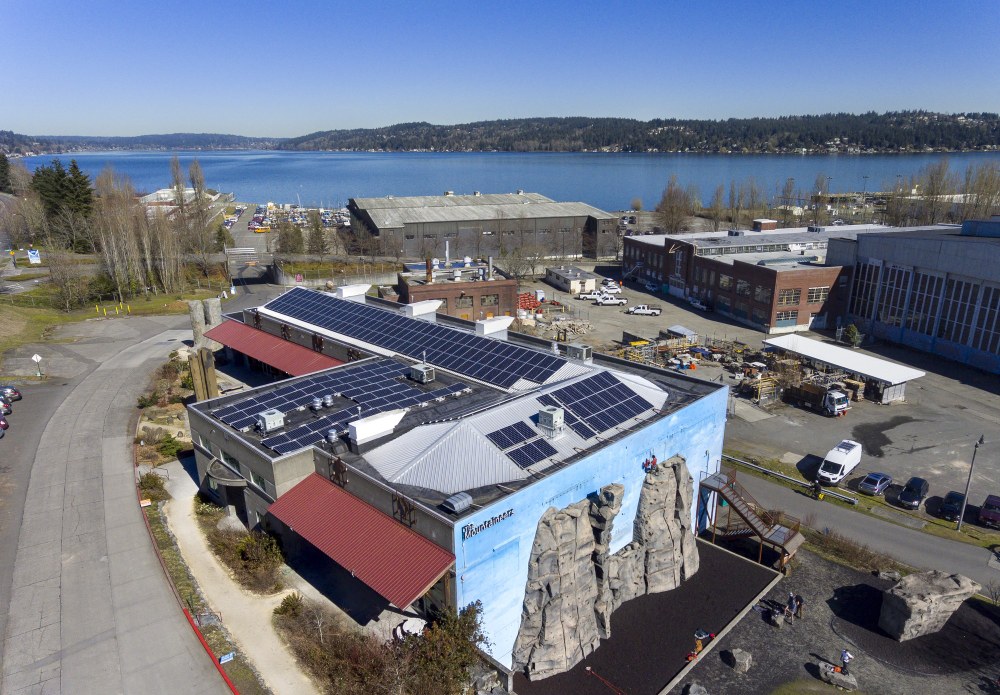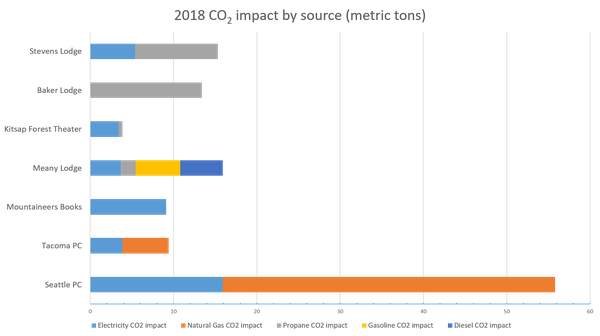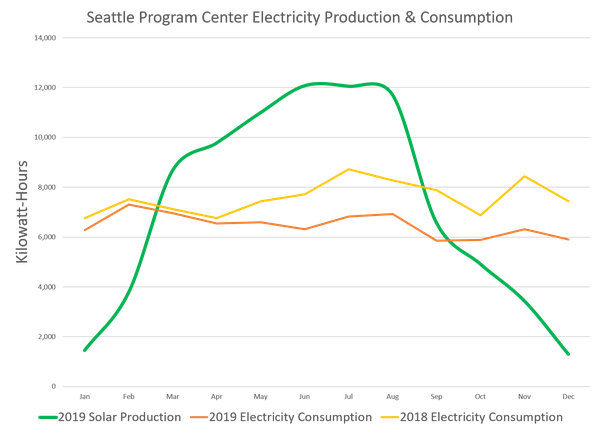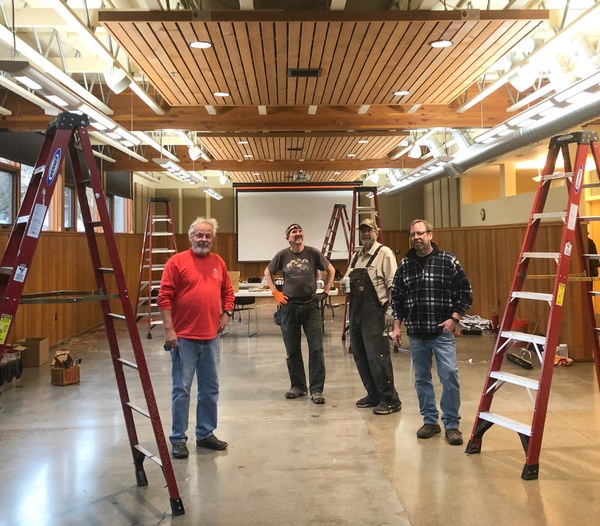
Worldwide, buildings contribute a significant portion of the global CO2 emissions through heating, cooling, and electrical use. Here at The Mountaineers, we own several old event centers and lodges. While these spaces support our community-focused mission, they contribute a fair share of our organization’s CO2. That’s why, after we pledged to reduce The Mountaineers carbon footprint as part of Vision 2022, the Carbon Footprint Reduction Committee focused our sights on The Mountaineers buildings first. From installing solar panels on the roof of the Seattle Program Center to replacing over 500 light bulbs with LED retrofits, Mountaineers volunteers have helped reduce our organization’s impact on the environment.
To better understand the changes we’ve made, we first need to dive into our region’s electrical grid. The Pacific Northwest is known for its hydroelectric energy production. Many of you are likely familiar with the dams along the Columbia River, and if you’ve explored North Cascades National Park you’ve likely seen these dams, which supply the City of Seattle with its electricity.
Yet despite the predominance of hydropower, our grid also includes coal generators. This means that even though our region primarily gets its electricity from hydroelectric power, a portion of our energy still comes from coal, which is a large producer of CO2. That’s why when we reduce our electricity consumption, we decrease the amount of CO2 emitted in the atmosphere.
Solar Panels at the Seattle Program Center
Mountaineers volunteers have been busy working to reduce our electricity consumption, starting with the Seattle Program Center, our biggest CO2 emitting building. We installed a new solar panel system on the roof of the Seattle Program Center in January of 2019, which has saved 65 metric tons of CO2 emissions, or the equivalent of 14 passenger vehicles driven for an entire year!
Here’s a look at our CO2 emissions from all of our buildings in 2018, where you can see the large use by our Seattle Program Center, along with use by type for all of our properties:

Now that the 2019 numbers are in, we are pleased to say the solar project has been hugely successful. The energy production of the solar panels on a monthly basis (green line in the graph below) produces the same amount of power on an annual basis that what we consumed in the building through 2018 (2018 data shown in orange).

LED Retrofits
Volunteers also replaced fluorescent light bulbs and tubes with energy efficient LEDs in 2019-20 at the Seattle Program Center. It is projected that these changes will reduce our lighting electrical demand by 50% and overall electrical consumption by 14%, dropping CO2 emissions by an additional nine tons (the equivalent of two passenger vehicles driven for an entire year).
LED conversions and occupancy sensor installations began at the Tacoma Program Center in January 2019. A crew of Tacoma volunteers altered circuits in the Great Hall to allow for the projector screen area to be darkened separately while illuminating the seating region and they installed new, more powerful LED lighting for the indoor climbing wall. A savings of 7,000 kWh (or about seven months of electricity usage for the average household) is projected with the conversions.
Over 400 fluorescent tubes, nearly 100 recessed lights, and over 100 screw-in bulbs were replaced by both volunteer teams. These cumulative actions reduce our carbon footprint and save us roughly $12,500 annually in utility costs. And, as a bonus, our poorly lit indoor climbing walls finally have the illumination they need.

More carbon footprint efforts coming soon
Stay tuned to future blog posts to hear about more ways The Mountaineers are reducing our collective carbon footprint. You can learn more about doing your own LED retrofits, generating your own electricity with solar panels, or the benefits of electric vehicles, in these recent webinars. And as a committee we commit to investigating further options for carbon footprint reductions at the program centers, and beyond.
If you have any feedback on our work, please leave it in the comments or feel free to get in touch with a member of our Carbon Footprint Reduction Committee.
 Nate Brown
Nate Brown